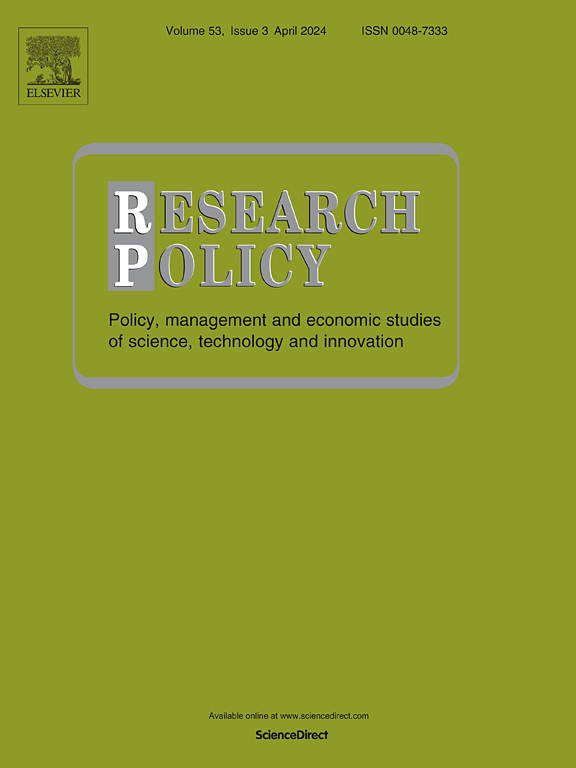Export controls and innovation transfer within Chinese business groups: Evidence from the U.S. entity list
IF 8
1区 管理学
Q1 MANAGEMENT
引用次数: 0
Abstract
This paper investigates the positive effect of U.S. export controls on the innovation performance of firms in Chinese business groups. Using annual microdata from 2010 to 2022, we analyze how firms indirectly affected by the U.S. entity list respond to these shocks. The positive effect of export controls on innovation performance is evident when indirectly shocked firms are peers of the blacklisted firms and becomes even more pronounced when they are upstream of the blacklisted firms, driven by the need for suppliers to initiate their own innovations. Additionally, we find that both capital and talent within the group are reallocated to these indirectly affected firms following the sanctions. These findings suggest that business groups serve as an internal innovation market, where innovation transfer occurs through inter-firm industrial interaction and resource reallocation. However, the shocks show no significant effect on the innovation performance of the group as a whole, rejecting the hypothesis of overall innovation enhancement. Further analysis reveals that export controls significantly improve firms' productivity, illustrating positive spillover effects on product markets. Overall, this study reveals that export controls drive innovation transfer within Chinese business groups and accelerate technological decoupling from the United States.
中国企业集团内部的出口管制和创新转移:来自美国实体名单的证据
本文考察了美国出口管制对中国企业集团企业创新绩效的积极影响。利用2010年至2022年的年度微观数据,我们分析了受美国实体名单间接影响的公司如何应对这些冲击。当间接受到冲击的企业与被列入黑名单的企业处于同一水平时,出口管制对创新绩效的积极影响是明显的,当这些企业处于被列入黑名单的企业的上游时,这种积极影响就更加明显了,因为供应商需要启动自己的创新。此外,我们发现,在制裁之后,集团内部的资本和人才都被重新分配给了这些间接受影响的公司。研究结果表明,企业集团作为企业内部创新市场,通过企业间产业互动和资源再配置实现创新转移。然而,冲击对整体创新绩效没有显著影响,否定了整体创新增强的假设。进一步分析表明,出口管制显著提高了企业的生产率,说明了对产品市场的积极溢出效应。总体而言,本研究表明出口管制推动了中国企业集团内部的创新转移,并加速了与美国的技术脱钩。
本文章由计算机程序翻译,如有差异,请以英文原文为准。
求助全文
约1分钟内获得全文
求助全文
来源期刊

Research Policy
MANAGEMENT-
CiteScore
12.80
自引率
6.90%
发文量
182
期刊介绍:
Research Policy (RP) articles explore the interaction between innovation, technology, or research, and economic, social, political, and organizational processes, both empirically and theoretically. All RP papers are expected to provide insights with implications for policy or management.
Research Policy (RP) is a multidisciplinary journal focused on analyzing, understanding, and effectively addressing the challenges posed by innovation, technology, R&D, and science. This includes activities related to knowledge creation, diffusion, acquisition, and exploitation in the form of new or improved products, processes, or services, across economic, policy, management, organizational, and environmental dimensions.
 求助内容:
求助内容: 应助结果提醒方式:
应助结果提醒方式:


